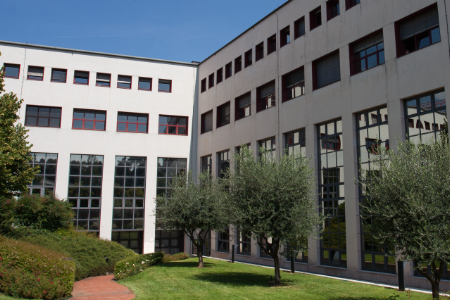- Authors:
-
Henriette, Asséo; Petre, Petcuţ; Piasere, Leonardo
- Title:
-
Romania's Roma. A Social-Historical Overview
- Year:
-
2017
- Type of item:
-
Contributo in volume (Capitolo o Saggio)
- Tipologia ANVUR:
- Contributo in volume (Capitolo o Saggio)
- Language:
-
Inglese
- Format:
-
A Stampa
- Book Title:
-
Open Borders, Unlocked Cultures. Romanian Roma Migrants in Western Europe
- Publisher:
- Routledge
- ISBN:
- 9781138239487
- Page numbers:
-
26-56
- Keyword:
-
Roma, Romania, Migrations, Social History, Historical Anthropology.
- Short description of contents:
- The rise of the historiography of Romanian Roma these 25 last years is grounded in several kinds of works: synthesis, document collections and case studies by a new generation of historians. In contrast with this specific literature about Roma, there is a very dynamic Romanian historical school which, however, neglects the Roma. This partition between “history of Roma” and “history of Romania” reinforces a general framework of opposition between “minorities” and national consensus. Our approach is informed by a frame known as “new social history” and historical anthropology, which is grounded in primary sources (archival and oral testimonies) and which deals with the diversity of “case studies” by reintroducing past and present experiences of Romanian Roma into an overall consideration of political and social dimensions, not just ethnic identities. Our goal is not to criticize the extant studies on Romanian Roma but to include them in a general framework of analysis of twentieth-century history. This general framework of analysis is based on an acknowledgment of the various historical systems of power: Austro-Hungarian, Russian, Ottoman, Romanian, etc., and their effect on Romani communities. This allows us to derive a new picture, based on a “deep anthropology” that restores to the Roma their historical regional dimension. Three periods in the twentieth century have conditioned the situation we see today: The post-emancipation period, in particular the inter-war period, allows us to understand how, in this country under late seigniorial domination where the overwhelming majority of the inhabitants, including Roma, were peasants, agrarian reforms are decisive for an understanding of the status of Roma. The long struggle between the permanent peasant insurrection and those in power gave rise to the deportation of the Roma to Transnistria, facilitated by war and the Fascist period. A second key period opened with the communist takeover and the emerging reshaping of society, following the phases of collectivisation of production units (state farms, etc.). It is important to recall that mobility and pluri-activity are shared features of all populations (Roma and non-Roma) in a Romanian economy dominated until recently by the agrarian sector. This is a powerful determinant of the present-day social status. In contrast to other communist countries (like Czechoslovakia), Romania had a late (after 1977) and very modest ‘Gypsy policy’, and there was no recognition of a Roma minority during the communist period. Finally, the transition of 1993 and its consequences for the rural system allow us to understand why the new emancipation, based on the recognition of minorities, often had negative effects on society, but also introduced new forms of mobility. Many studies present Roma as “others” of “exogenetic origin”, referring to intellectual patterns of “post-colonial studies”. This literature uses labels constructed during the communist period without being conscious of this ideological inheritance. In fact, the uniqueness of the ‘Roma’ label incorporates the collective destiny of Romanian Roma into patterns of analysis that juxtaopposes them to a bloc of ethnically homogeneous ‘Romanians’. The present chapter aims to show that the diversity of both the Romani people as well as Romanians as a whole is a structural fact the product of a Balkan State.
- Note:
- The research leading to the present publication results from MigRom, "The immigration of Romanian Roma to Western Europe: Causes, effects, and future engagement strategies", a project funded by European Union's Seventh Framework Programme under the call on "Dealing with diversity and cohesion: the case of the Roma in the European Union" (GA 319901).
- Product ID:
-
96611
- Handle IRIS:
-
11562/959711
- Last Modified:
-
January 31, 2019
- Bibliographic citation:
-
Henriette, Asséo; Petre, Petcuţ; Piasere, Leonardo,
Romania's Roma. A Social-Historical Overview
Open Borders, Unlocked Cultures. Romanian Roma Migrants in Western Europe
,
Routledge
,
2017
,
pp. 26-56
Consulta la scheda completa presente nel
repository istituzionale della Ricerca di Ateneo 








